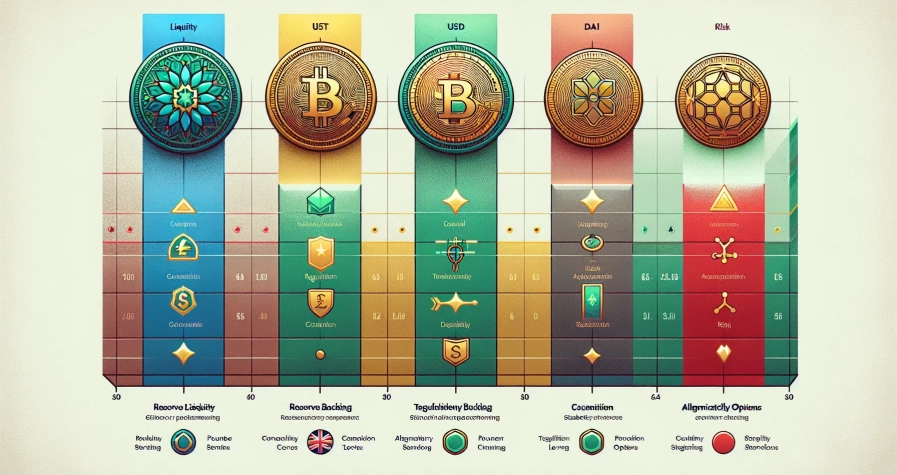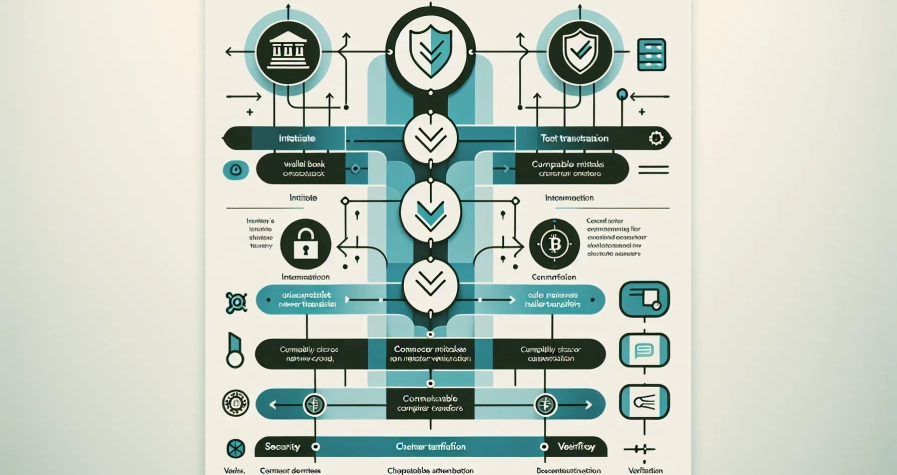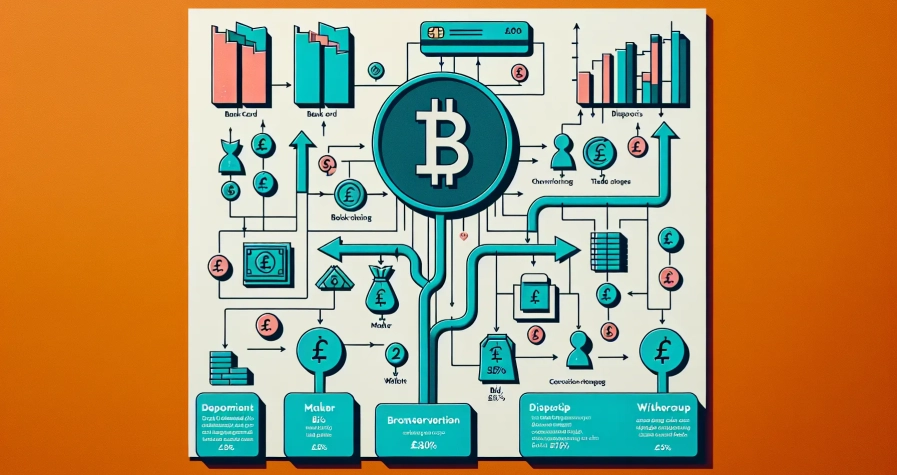Key Takeaways
- Airdrops are free cryptocurrency distributions where blockchain projects send tokens directly to your wallet without requiring any purchase, serving as a marketing strategy to increase adoption and reward community members.
- Multiple participation methods exist including snapshot-based distributions (capturing wallet balances at specific dates), task-based airdrops (completing social media engagement), and holder airdrops (rewarding users for maintaining specific tokens over time).
- Significant value potential has been demonstrated through success stories like Uniswap’s 400 UNI token distribution worth up to £18,000 per recipient and ENS airdrops valued at over £5,000 for active domain holders.
- Security risks require caution as scammers exploit airdrop enthusiasm through phishing attacks and fake distributions—legitimate airdrops never request private keys or seed phrases, only your public wallet address.
- Tax implications apply in most jurisdictions, with airdropped tokens potentially creating immediate income tax liabilities based on their fair market value at the time of receipt, requiring proper documentation and professional advice.
- Research and preparation are essential for success, involving following official project channels, using non-custodial wallets like MetaMask, and maintaining active engagement across multiple blockchain networks to maximise eligibility opportunities.
You’ve probably heard whispers about free cryptocurrency tokens landing in people’s digital wallets overnight. These mysterious windfalls aren’t glitches or hacking attempts – they’re airdrops, one of the most exciting phenomena in the crypto world.
Airdrops represent a revolutionary marketing strategy where blockchain projects distribute free tokens directly to your wallet. Think of them as digital gift cards that could potentially hold significant value. While some might seem worthless at first glance, history shows that certain airdropped tokens have transformed into substantial windfalls for lucky recipients.
Whether you’re a seasoned crypto investor or just starting your digital currency journey, understanding airdrops could unlock opportunities you never knew existed. From eligibility requirements to claiming processes, there’s a whole ecosystem of free cryptocurrency waiting to be explored.
What Are Airdrops in Crypto?
Cryptocurrency airdrops are free digital tokens distributed directly to your wallet address without requiring any purchase or payment. Blockchain projects use this distribution method to promote their tokens, reward existing community members, and increase adoption of their platforms.
You receive airdropped tokens through various mechanisms including snapshot-based distributions, where projects take a record of wallet holdings at a specific block height, and participation-based airdrops that reward users for completing certain actions. These actions range from following social media accounts to testing new protocols or holding specific cryptocurrencies in your wallet.
Distribution Methods:
- Snapshot airdrops capture wallet balances at predetermined dates
- Holder airdrops reward users for maintaining specific tokens over time periods
- Task-based airdrops require completing social media engagement or platform testing
- Exclusive airdrops target early adopters and active community participants
Projects typically announce airdrops through official channels including Twitter, Discord servers, and dedicated websites. The announcement includes eligibility criteria, distribution dates, and claiming procedures that you must follow to receive your tokens.
Airdrop values vary significantly from a few pounds to thousands of pounds per recipient. Notable examples include the Uniswap airdrop in September 2020, where eligible users received 400 UNI tokens worth approximately £1,200 at distribution time, and the Ethereum Name Service (ENS) airdrop that distributed tokens worth over £5,000 to active domain holders.
You maintain complete ownership of airdropped tokens once they arrive in your wallet, allowing you to trade, hold, or stake them according to your investment strategy. However, some projects implement vesting schedules that release tokens gradually over months or years to prevent immediate selling pressure.
How Do Crypto Airdrops Work?
Crypto airdrops operate through a systematic process where blockchain projects identify eligible participants and distribute tokens directly to their wallets. The mechanism involves three distinct phases: announcement of eligibility criteria, qualification verification through blockchain snapshots, and token distribution to verified wallets.
Distribution Methods
Projects deploy multiple distribution strategies to reach their target audiences effectively. Free token distribution delivers tokens automatically to eligible wallets without requiring user intervention once qualification criteria are met.
Task-based airdrops require you to complete specific promotional activities before receiving tokens. These activities include sharing content on social media platforms like Twitter or Discord, joining community channels, using the platform’s features, or completing educational quizzes about the project.
Snapshot-based airdrops capture blockchain data at predetermined timestamps to identify qualified wallet addresses. Projects analyse wallet holdings of specific cryptocurrencies during these snapshots, then distribute tokens proportionally to eligible addresses.
Referral programmes and beta participation rewards target users who actively promote the project or test early product versions. These airdrops incentivise community growth by rewarding users for inviting new participants or providing valuable feedback during development phases.
Eligibility Requirements
Qualification criteria vary significantly across different airdrop campaigns, with projects establishing specific parameters to target their desired user base. Token holding requirements constitute the most common eligibility factor, where you must own specified amounts of particular cryptocurrencies by designated snapshot dates.
Active platform usage serves as another primary qualification method, rewarding early adopters who have interacted with decentralised applications, completed transactions, or maintained consistent engagement with project ecosystems. Historical blockchain activity demonstrates genuine user interest rather than opportunistic participation.
Social media engagement tasks require completing promotional activities such as following official accounts, retweeting announcements, joining Telegram groups, or creating user-generated content. These requirements help projects expand their community reach and increase brand awareness.
Platform registration and KYC verification may be mandatory for certain airdrops, particularly those from projects operating in regulated jurisdictions. Some campaigns require email registration, identity verification, or completion of compliance procedures before token distribution occurs.
Geographic restrictions occasionally limit participation based on your location due to regulatory constraints, with certain countries excluded from airdrop eligibility to ensure legal compliance.
Different Types of Crypto Airdrops
Crypto airdrops come in distinct categories, each designed to achieve specific marketing objectives and community engagement goals. Understanding these variations helps you identify opportunities and meet the required participation criteria effectively.
Standard Airdrops
Standard airdrops represent the most straightforward token distribution method, requiring minimal effort from participants. You typically complete simple tasks such as registering on a project’s website, joining their Telegram channel, or following their social media accounts to qualify for these distributions.
Projects use standard airdrops primarily to build initial awareness and expand their user base rapidly. The Stellar (XLM) airdrop exemplifies this approach, distributing tokens to users who simply created accounts on participating platforms. These airdrops often have broad eligibility criteria, making them accessible to newcomers entering the cryptocurrency space.
Registration processes for standard airdrops usually involve providing basic information such as your wallet address and email. Some projects implement additional verification steps through social media confirmation or newsletter subscriptions to ensure genuine interest from participants.
Bounty Airdrops
Bounty airdrops reward you for completing specific promotional activities that directly benefit the project’s marketing efforts. These tasks range from creating content and sharing posts on social media platforms to writing detailed reviews or referring new users to the platform.
Projects typically establish point-based systems for bounty airdrops, allocating higher token rewards for more complex or valuable contributions. BitTorrent (BTT) operated successful bounty campaigns that rewarded participants for promoting content across various digital channels. Translation services, bug reporting, and community moderation often qualify as bounty activities.
Participation in bounty airdrops requires active engagement over extended periods, unlike the one-time actions of standard airdrops. Projects maintain dedicated bounty management platforms where you can track your progress, submit completed tasks, and calculate your expected token allocation based on accumulated points.
Holder Airdrops
Holder airdrops distribute tokens automatically to users who possess specific cryptocurrencies in their wallets at predetermined snapshot times. Projects take blockchain snapshots to identify eligible wallet addresses and their respective token balances, ensuring fair distribution based on actual holdings.
These airdrops reward loyalty and encourage long-term token retention within project ecosystems. The distribution ratio typically correlates with your holding amount – larger balances receive proportionally more airdropped tokens. Some holder airdrops require maintaining minimum balance thresholds for specific durations before the snapshot date.
Snapshot timing announcements allow you to prepare by acquiring the required tokens beforehand, though projects sometimes keep snapshot dates confidential to prevent artificial price manipulation. Exchanges may or may not support holder airdrops for tokens stored in their custody, making personal wallet storage preferable for guaranteed participation.
Exclusive Airdrops
Exclusive airdrops target select community segments, rewarding early adopters, active contributors, or members meeting specific criteria established by project teams. These distributions create scarcity and recognise valuable community participation beyond simple token holding or task completion.
Eligibility for exclusive airdrops often depends on your historical interaction with the project ecosystem, including beta testing participation, governance voting activity, or consistent platform usage over extended periods. Projects may also reserve exclusive airdrops for NFT holders, governance token stakeholders, or users who achieved specific milestones within their platforms.
Access to exclusive airdrops frequently requires invitation-only participation or membership in private community channels. Projects announce these distributions through direct communication with qualified users rather than public marketing channels, maintaining exclusivity whilst rewarding their most engaged supporters.
Benefits of Participating in Airdrops
Participating in cryptocurrency airdrops offers multiple advantages that can enhance your crypto portfolio and deepen your understanding of blockchain technology. These free token distributions provide opportunities to engage with emerging projects whilst potentially generating returns without any initial investment.
Free Token Access Without Investment
You receive tokens at no cost when participating in airdrops, eliminating the need for upfront capital expenditure. This zero-risk entry point makes airdrops particularly attractive for newcomers to cryptocurrency markets who want to build their portfolios without financial exposure. Your wallet can accumulate various tokens from different projects, diversifying your holdings without depleting your existing funds.
Exposure to Innovative Projects
Airdrops introduce you to new blockchain platforms, decentralised applications, and emerging protocols that you might not discover through traditional research methods. These distributions often come from cutting-edge projects seeking to demonstrate their technology and attract early adopters. Your participation grants you firsthand experience with novel blockchain solutions before they gain mainstream attention.
Enhanced Learning Experience
Engaging with airdrop campaigns develops your practical knowledge of crypto wallet management, blockchain networks, and decentralised finance protocols. You gain hands-on experience navigating different platforms, understanding smart contract interactions, and managing multiple token types across various networks. This educational aspect strengthens your overall blockchain literacy and technical competence.
Early Access Opportunities
Receiving airdropped tokens often provides you with early entry into promising projects that may appreciate significantly in value over time. Your early participation can unlock governance rights, staking rewards, and exclusive features within the project ecosystem. Historical examples include Uniswap’s UNI token distribution, which delivered substantial value to early users of the decentralised exchange platform.
Community Building and Network Effects
Airdrop participation connects you with project communities and fellow crypto enthusiasts, expanding your network within the blockchain ecosystem. Your involvement in these communities can lead to additional opportunities, insights about upcoming projects, and collaborative relationships. Projects use airdrops to build loyal user bases, creating environments where you can engage with developers and other community members directly.
Potential Long-term Value Creation
Airdropped tokens may generate ongoing returns through staking mechanisms, governance participation rewards, and protocol fee distributions. Your tokens can appreciate in value as the underlying projects develop and gain market traction, providing passive income streams beyond the initial token receipt. Some projects implement additional reward systems for token holders, creating multiple value creation pathways for your airdropped assets.
Risks and Considerations
Crypto airdrops present significant risks alongside their potential rewards. Understanding these dangers protects your investments and personal information from malicious actors.
Scams and Security Threats
Scammers frequently exploit airdrop enthusiasm to steal private keys and personal data through fraudulent campaigns. Legitimate airdrops only require your public wallet address, never your private keys or seed phrases.
Common security threats include:
- Phishing attacks targeting users through fake official websites and social media accounts
- Fake token distributions designed to drain wallets when users attempt to claim worthless tokens
- Malicious smart contracts requesting full wallet access permissions
- High transaction fees for claiming tokens that exceed the airdrop’s actual value
- Social engineering schemes promising exclusive airdrops in exchange for sensitive information
Protecting yourself requires using only official project channels for airdrop information and conducting thorough research before participation. Consider creating a separate “burner wallet” specifically for airdrop activities to isolate potential risks from your main holdings. Verify project authenticity through multiple sources and remain sceptical of promises that seem too generous.
Tax Implications
Receiving airdropped tokens creates taxable events in most jurisdictions, potentially generating immediate tax liabilities. You may owe income tax on the fair market value of tokens at the time you receive them, regardless of whether you sell them immediately.
Key tax considerations include:
| Tax Scenario | UK Treatment | Implications |
|---|---|---|
| Token receipt | Taxable income | Based on fair market value when received |
| Token disposal | Capital gains/losses | Calculated from original receipt value |
| Holding period | Varies by classification | May affect tax rates applied |
Documentation requirements include maintaining records of airdrop dates, token quantities received, market values at receipt time, and subsequent disposal transactions. Some jurisdictions classify airdrops as miscellaneous income, whilst others treat them as capital assets from the moment of receipt.
Professional tax advice becomes essential when dealing with significant airdrop values, as regulations vary considerably between countries and continue evolving. Failing to report airdropped tokens can result in penalties and interest charges from tax authorities.
How to Find and Participate in Legitimate Airdrops
Finding legitimate airdrops requires systematic research and proper wallet preparation. You can maximise your participation opportunities by following verified channels and maintaining active engagement across multiple blockchain platforms.
Research and Verification
Research authentic airdrop opportunities through official project channels on Twitter, Discord and Telegram. Monitor established crypto news platforms like CoinDesk, CryptoSlate and specialised forums such as Reddit’s r/CryptoCurrency for verified announcements.
Verify project legitimacy by examining team credentials, whitepaper quality and community engagement metrics. Cross-reference information across multiple official sources before participating in any airdrop campaign.
Avoid common scam indicators including requests for private keys, seed phrases or upfront payments. Legitimate airdrops never require sharing sensitive wallet information beyond your public address.
Follow crypto influencers and analysts who regularly share verified airdrop opportunities. Join dedicated airdrop communities on platforms like AirdropAlert and CoinMarketCap Airdrops for curated listings.
Document official project websites, smart contract addresses and distribution timelines for each airdrop you’re tracking. Bookmark official announcement posts to reference eligibility requirements and claiming procedures.
Setting Up Your Wallet
Configure a non-custodial wallet like MetaMask, Trust Wallet or Phantom to receive airdropped tokens directly. Non-custodial wallets provide complete control over your private keys and ensure automatic token receipt.
Compare wallet features including supported blockchain networks, transaction fees, security measures and user interface design. Popular options include:
| Wallet Type | Examples | Key Features |
|---|---|---|
| Browser Extension | MetaMask, Rabby | Web3 integration, DeFi compatibility |
| Mobile Apps | Trust Wallet, Coinbase Wallet | Portable access, QR scanning |
| Hardware Wallets | Ledger Nano X, Trezor | Maximum security, offline storage |
| Multi-chain | Exodus, Atomic Wallet | Multiple cryptocurrency support |
Create separate wallet addresses for different blockchain networks to maximise airdrop eligibility. Maintain active balances across major networks including Ethereum, Binance Smart Chain, Polygon and Solana.
Enable notifications for wallet activity and token additions to track incoming airdrops automatically. Keep your wallet software updated to support new token standards and blockchain integrations.
Backup your seed phrase securely using offline storage methods like hardware devices or paper copies stored in multiple physical locations.
Popular Airdrop Success Stories
Uniswap (UNI) stands as the most celebrated airdrop success story in cryptocurrency history. The decentralised exchange distributed 400 UNI tokens to every user who had interacted with its platform before September 2020. These tokens reached a peak value of approximately $18,000 per recipient, transforming early platform users into overnight beneficiaries of substantial crypto wealth.
Arbitrum (ARB) delivered exceptional rewards to early adopters of its Ethereum Layer 2 scaling solution in 2023. The project distributed tokens based on transaction volume and interaction frequency, with some recipients obtaining thousands of dollars worth of ARB tokens. This airdrop particularly rewarded users who had bridged assets and conducted multiple transactions on the network.
OmiseGO (OMG) provided ETH holders with 9.7 OMG tokens for every ETH held and 0.3 OMG tokens for each existing OMG token. When OMG prices peaked at approximately $24 following the airdrop announcement, recipients experienced significant portfolio gains proportional to their original ETH holdings.
Bitcoin Cash (BCH) represents the largest airdrop by market capitalisation when it launched in August 2017. Every Bitcoin holder received an equal amount of BCH tokens following the blockchain fork, effectively doubling their cryptocurrency holdings. Many recipients held BCH tokens worth thousands of dollars immediately after distribution.
Ontology (ONT) rewarded NEO ecosystem participants with 1,000 ONT tokens per qualifying wallet. The strategic distribution targeted NEO holders and supporters, creating substantial value for the NEO community whilst establishing Ontology’s initial user base.
Stellar (XLM) executed multiple airdrop campaigns distributing 2 billion XLM tokens through various partnerships in 2019. These distributions reached millions of users through collaborations with established platforms, significantly expanding Stellar’s adoption rates.
Ethereum Name Service (ENS) allocated tokens based on domain registration activity and holding duration in November 2021. Users who had registered .eth domains earlier received proportionally more tokens, with some long-term domain holders obtaining ENS tokens worth several thousand dollars.
Sui and Aptos demonstrate recent Layer 1 blockchain successes, with both projects’ tokens entering the top 50 cryptocurrencies by market capitalisation immediately following their airdrops. These distributions rewarded testnet participants and early community members, establishing strong market positions from launch.
| Project | Distribution Method | Peak Value Range | Target Recipients |
|---|---|---|---|
| Uniswap (UNI) | Platform users | $18,000 | Early DEX users |
| Arbitrum (ARB) | Transaction activity | $1,000-$10,000 | Layer 2 adopters |
| OmiseGO (OMG) | ETH holders | $200-$2,000 | Ethereum community |
| Bitcoin Cash (BCH) | Bitcoin fork | $300-$4,000 | Bitcoin holders |
| Ontology (ONT) | NEO ecosystem | $500-$3,000 | NEO supporters |
| Stellar (XLM) | Partnership campaigns | $25-$200 | Platform users |
| ENS | Domain registrants | $1,000-$15,000 | .eth domain owners |
These success stories demonstrate how participating in quality blockchain projects during their early phases can yield substantial returns through airdrop distributions, rewarding users who contribute to network growth and adoption.
Conclusion
Crypto airdrops represent a unique opportunity to expand your digital asset portfolio without financial investment. While these free token distributions can potentially yield significant returns you must approach them with caution and thorough research.
Success in airdrop participation requires staying informed through official channels and maintaining proper security practices. Remember that legitimate projects will never ask for your private keys or sensitive personal information beyond your public wallet address.
The key to maximising airdrop benefits lies in early engagement with promising blockchain projects and active participation in their ecosystems. By following the strategies outlined above you’ll be well-positioned to identify genuine opportunities while avoiding common pitfalls.
Your journey into the world of crypto airdrops should balance optimism with prudent risk management ensuring both security and potential rewards.
Frequently Asked Questions
What are cryptocurrency airdrops?
Cryptocurrency airdrops are free token distributions sent directly to users’ digital wallets as part of blockchain projects’ marketing strategies. Think of them as digital gift cards that can potentially hold significant value. Projects use airdrops to build awareness, reward early adopters, and foster community engagement within their ecosystem.
How do crypto airdrops work?
Crypto airdrops follow a systematic three-phase process: first, projects announce eligibility criteria and distribution details; second, they verify user qualifications through blockchain snapshots or activity checks; finally, tokens are automatically distributed to verified wallets. The entire process is typically managed through smart contracts for transparency and efficiency.
What are the different types of crypto airdrops?
There are four main types: Standard airdrops require minimal effort like social media follows; Bounty airdrops reward promotional activities; Holder airdrops automatically distribute to users holding specific cryptocurrencies; and Exclusive airdrops target early adopters or active community members based on their historical project interaction.
What are the eligibility requirements for airdrops?
Eligibility requirements vary significantly between projects but commonly include: holding specific tokens at snapshot times, active platform usage, completing social media tasks, website registration, and sometimes KYC verification. Geographic restrictions may also apply based on regulatory compliance requirements in certain jurisdictions.
Are crypto airdrops safe to participate in?
Legitimate airdrops are generally safe when proper precautions are taken. However, scammers exploit airdrop enthusiasm through phishing attacks and fake distributions. Always verify projects through official channels, never share private keys, and remember that genuine airdrops only require your public wallet address—nothing more.
Do I need to pay taxes on airdropped tokens?
Yes, in most jurisdictions, receiving airdropped tokens creates a taxable event. The tokens are typically classified as taxable income at their fair market value when received. Additionally, selling or trading these tokens may trigger capital gains or losses. Consult a tax professional for jurisdiction-specific guidance.
How can I find legitimate airdrop opportunities?
Research authentic airdrops through official project channels, verified social media accounts, and established crypto news platforms. Examine team credentials, community engagement metrics, and project roadmaps. Avoid opportunities requiring sensitive information beyond your public wallet address, as these are common scam indicators.
What wallet should I use for receiving airdrops?
Use a non-custodial wallet like MetaMask, Trust Wallet, or hardware wallets for maximum security and control. Create separate addresses for different blockchain networks to maximise eligibility. Ensure your wallet supports the specific blockchain networks where airdrops occur, and always securely backup your seed phrases.
Can airdropped tokens become valuable?
Yes, many airdrops have generated substantial value. Notable examples include Uniswap (peak value ~$18,000 per recipient), Arbitrum, and Ethereum Name Service. However, not all airdropped tokens appreciate in value. Success depends on the project’s adoption, utility, and market conditions over time.
What should I do after receiving airdropped tokens?
After receiving tokens, you maintain full ownership and can hold, trade, or stake them as desired. Some projects implement vesting schedules to prevent immediate selling. Research the token’s utility, governance rights, and potential staking rewards to make informed decisions about your holdings.









